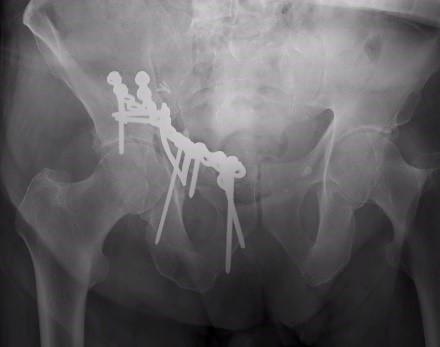Appointments
-
Call +32 16 34 48 50
- Mondays to Thursdays from 08:00 to 18:00
- Fridays from 08:00 to 17:00
Symptoms
Fractures of the hip socket usually cause pain at the level of the buttocks and groin. Movements at the hip are very painful and usually not possible.
Treatment
If the fracture is displaced, surgery is required to restore the anatomy and proper functioning of the hip socket.
If the fracture is not displaced, it can usually be treated without surgery.
Surgery
We aim to preserve the joint by restoring the hip socket anatomically.
This is done through an open surgical procedure involving surgery through the abdominal wall and along the major blood vessels (anterior) or through the hip joint (posterior).
The fracture is then reduced and fixed using plates and screws. Sometimes a combined procedure needs to be performed (anterior + posterior access).
These procedures are performed through classical open incisions. This is because it is crucial to restore the joint perfectly anatomically and this can only be done through open surgery.

Standard X-ray image of the pelvis after anterior surgery of the acetabulum (hip socket).
Rapid rehabilitation while maintaining mobility is the aim here. In rare cases, in the elderly, a hip replacement is placed in combination with osteosynthesis for this reason.
Aftercare
After surgery, you should not put any weight on the side of the fracture for 6 weeks. You may, however, walk with a walker/crutches and only use the healthy side. During this period you will also practice mobility (flexibility) and muscle strength. If no problems occur postoperatively, the average stay in hospital after the operation is ± 7 days.
After this no-load period, load may be built up for 6 weeks under the supervision of the physiotherapist.
Prognosis, risks and complications
Specialists



